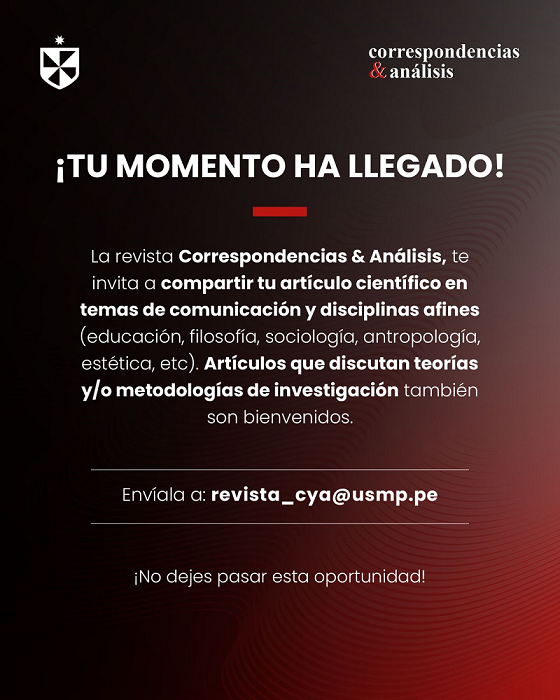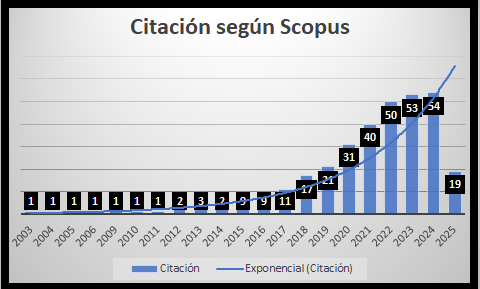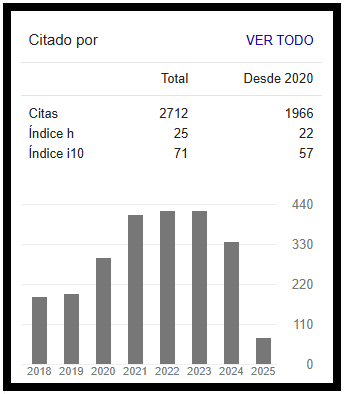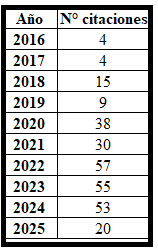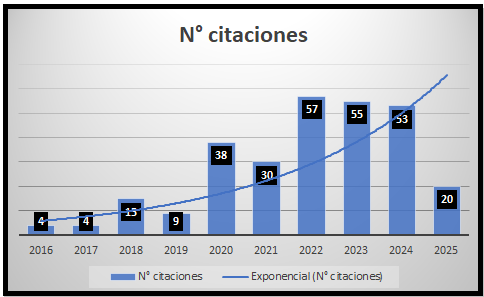Jane Austen and C. S. Lewis: from Literature to Cinema. Analysis of Transposition
DOI:
https://doi.org/10.24265/cian.2016.n6.15Keywords:
Transposition, Film, Literature, Adaptation, C. S. Lewis, Jane AustenAbstract
The following is a proposal of an analysis of the transposition of literature to film of the novel Pride and Prejudice by Jane Austen and the essay A Grief Observed by C. S. Lewis. The first aim in both cases is to delve into the new contributions of the latest film version of Austin’s novel and the qualities and characteristics of the film version of the C. S. Lewis note pad, based on the theoretical contributions of such authors as Gerard Genette, Geoffrey Wagner, Brian Mcfarlane, among others.
The second purpose is geared to the recognition of the exchange between film and literary language as a representative process of today society. The fact that the adaptations, historically seen with great skepticism, are now continually made and welcomed by the public, calls for a review and deepening of the studies made on that matter in order to know the current situation of the relationship between film and literature, its creative possibilities, audience expectations, prejudices and misgivings of experts, etc.
Metrics
Downloads
References
Attenborough, R. (director) (1993). Tierra de sombras [película]. Londres: Price Entertainment.
Austen, J. (1979). Orgullo y Prejuicio. Buenos Aires: Centro Editor de América Latina S. A.
Belinchón, G. (2013, enero 28). “‘Orgullo y Prejuicio’, de Jane Austen, más allá de los libros”. En blog Versión muy original. Extraída el 28/VII/2015 desde http://blogs.elpais.com/versionmuyoriginal/2013/01/jane-austen-en-el-cine-y-la-television.html
Benveniste, E. (1994). “Semiología de la lengua. Problemas de Lingüística General II”, pp. 47-70. Extraída el 27/VII/2015 desde http://web.udl.es/usuaris/s2430206/materials/Benveniste.pdf
Bermúdez, N. (2008). “Aproximaciones al fenómeno de la transposición semiótica: lenguajes dispositivos y géneros”. Estudios semióticos, núm. 4. Extraída el 27/VII/2015 desde http://www.fflch.usp.br/dl/semiotica/es/eSSe4/2008-eSSe[4]-N.%20D.%20BERMUDEZ.pdf
Carvajal, E. (2011). “De lo literario y lo fílmico en Del amor y otros demonios”. Acta Literaria, núm. 43. pp. 45-59. Extraída el 10/VII/2015 desde http://www.redalyc.org/articulo.oa?id=23721471004
Castillo Rodríguez, F. (1988). “El lenguaje cinematográfico”. Semiosis, núm. 21, pp. 43-75. Extraída el 27/VII/2015 desde http://cdigital.uv.mx/handle/123456789/6352
Dottori, N. (1979). “Estudio Preliminar”, pp. I-VI. En Austen, J. Orgullo y Prejuicio. Buenos Aires: Centro Editor de América Latina S. A.
Eisenstein, S. (1977). Film form. Essays in Film Theory. San Diego: Harcourt, Inc.
Genette, G. (1989). Palimpsestos. La literatura en segundo grado. Madrid: Taurus.
Gresham, D. (1997). “Un Prólogo a Una pena observada” pp. 7-16 En Lewis, C. S. Una pena observada. Santiago de Chile: Andrés Bello.
Guzzetti, S. (2013, octubre 16). “‘Yo y mi padre C. S. Lewis’: Douglas Gresham, converso, vela para que Narnia no sea tergiversada”. Extraída el 27/VII/2015 desde http://www.religionenlibertad.com/yo-y-mi-padre-cs-lewis-douglas-gresham-converso-vela-para-31621.htm
Jane Austen en castellano (2015). “Las adaptaciones para cine y televisión de la obra de Jane Austen”. Extraída el 27/VII/2015 desde https://janeaustencastellano.wordpress.com/filmografia/
Lewis, C. S.
_(1997). Una pena observada. Santiago de Chile: Andrés Bello.
_(1994). Sorprendido por la alegría. Santiago de Chile: Andrés Bello.
Martín-Barbero, J. (1987). De los medios a las mediaciones. Barcelona: Gustavo Gili.
Pemberley Digital (2015). “The Lizzie Bennet diaries”. Extraída el 28/VII/2015 desde http://www.pemberleydigital.com/the-lizzie-bennet-diaries/
Peña-Ardid, C. (1999). Literatura y cine. Una aproximación comparativa. Madrid: Cátedra.
Pérez Villarreal, L. (2001). Cine y literatura. Entre la realidad y la imaginación. Quito: Ediciones Abya-Yala.
Pierce, C. (1974). La ciencia de la semiótica. Buenos Aires: Ediciones Nueva Visión.
Rebatta, F. (2015, julio 24). Comunicador y director. Entrevista personal. Lima.
Sánchez Noriega, J. (2001). “Las adaptaciones literarias al cine: un debate permanente”. Comunicar, núm. 17. pp. 65-69. Extraída el 20/VII/2015 desde http://www.redalyc.org/articulo.oa?id=15801709
TV Pública Argentina (2013, marzo 11). "Los 7 locos 090313 (1 de 4)”. Extraída el 18/VII/ 2015 desde https://www.youtube.com/watch?v=OARpNboxB4
Valverde, J. (2008). “Prólogo”, pp. 9-16. En Austen, J. Emma. Barcelona: Lumen, Tusquets Editores.
Wilson, A. (1990). C. S. Lewis. Biografía. Santiago de Chile: Andrés Bello.
Wright J. (director) (2005). Orgullo y Prejuicio [película]. Londres: StudioCanal.
Downloads
Published
Issue
Section
License
In case the manuscript is approved, the authors retain the copyright and assign to the journal the right to publish, edit, reproduce, distribute, display and communicate in the country of origin and abroad by means of print and electronic media in different databases.
In order for this procedure to be recorded, the author must fill out the following formats:
Format 1 - Author data Format.
Format 2 - Affidavit on originality and authorization for the publication of articles Format.
Format 3 - Open Science Compliance.








2.png)


